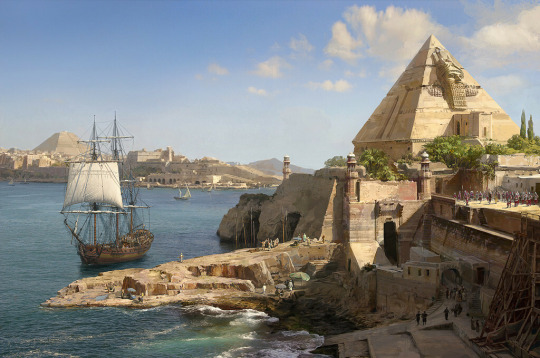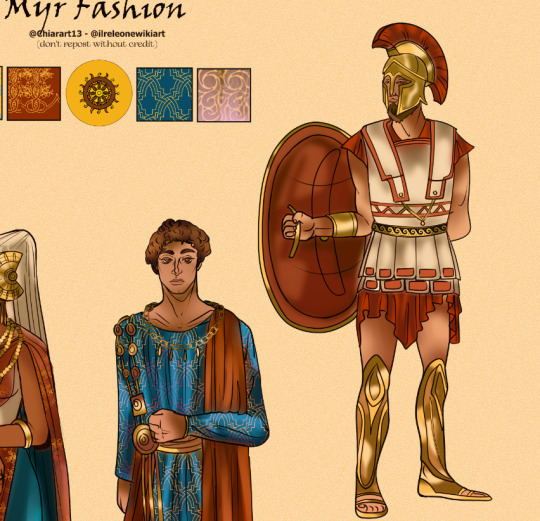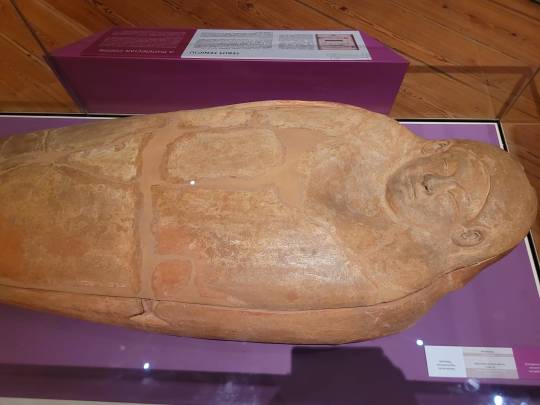#Phoenicians
Explore tagged Tumblr posts
Text

The sister cities of Tyre and Sidon, Phoenicia by Sasha Beliaev
#tyre#sidon#phoenicia#maritime#port#harbour#art#sasha beliaev#ports#harbours#phoenician#phoenicians#mediterranean#eastern mediterranean#levant#ships#ship#biblical#bible#history#antiquity#architecture#boat#boats#sailing#sea#seaport
277 notes
·
View notes
Text







Essos fashion studies: Myr
"Some maesters believe that Myrmen are descended from the Rhoynar, as many of the Myrmen share their olive skin and dark hair, but this theory is disputed. Myrmen speak a dialect of bastard Valyrian,and the Common Tongue when spoken with a Myrish accent can sound sultry. The mercantile port's inhabitants have no established faith. Myr is ruled by a conclave of magisters, chosen from amongst the most wealthy and noble men of the city. The magisters give lavishly to passing Dothraki khals to prevent their khalasars from sacking the city. A slave city, Myr has three slaves for every freeborn. The slaves in Myr are collared and branded. There are those in the city who have Unsullied in their service. The Myrmen fight often with Tyrosh and Lys over the Disputed Lands, though they will not risk the lives of their citizens in this, preferring to hire free companies instead. Myrmen often use stilettos and crossbows and bravos can be found in Myr as well. Myrish pirates often have nests in the Stepstones. "The Seasons of My Love" is a Myrish song."
#illustration#artists on tumblr#chiara's art#digital illustration#digital art#fanart#art#pre asoiaf#a song of ice and fire#asoiaf fanart#ilreleonewikia#asoiaf art#fashion illustration#fashion studies#period fashion#perioddramaedit#valyrianscrolls#essos#myr#phoenicians#ring of power#star wars#ancient history#george rr martin
43 notes
·
View notes
Text

Inanna
Inanna is the Mesopotamian goddess of fertility, love, power, and sensuality.
Inanna’s worship can be traced back to Sumer as early as 4000 BC
traditional worship to this deity included sacred prostitution, sexual rites, and an emphasis on the arts
often know as Ishtar (by the Assyrians) or Astarte (by the Phoenicians)
Inanna is often seen as the origin of Aphrodite’s cults in Cyprus and Cythera. the goddess also shares similarities with Isis, the Egyptian goddess of magic and femininity
Associations
star of Inanna (also known as the star of Ishtar or the eight-pointed star)
lions
roses
doves
weapons (particularly whips, reeds, and hooks)
ps… this is my first time researching Inanna-Ishtar and im eager to learn! let me know if i got anything wrong or if there’s anything else i should know!

🗡️🕊️🩸
#inanna#isis ishtar#aphrodite devotion#aphrodite#aphrodite worship#witchcraft#witches of tumblr#hellenism#aphrodite altar#aphrodite devotee#hellenic deities#aesthetic#phoenicians#ancient sumeria#ancient assyria#astarte#ishtar
93 notes
·
View notes
Text

𝓜𝓮𝓵𝓴𝓪𝓻𝓽𝓱 𝓕𝓪𝓵𝓵 𝓐𝓼𝓵𝓮𝓮𝓹
Recently I've been addicted to Phoenician art style,so here is a new character. He is the first king who established the city of Tyre, and was equivalent to "Baal", the patrons of other cities in Canaanian area.
I know that cremation was common in their time, and Melqart was resurrected from the fire, but I saw the sarcophagus of King Hiram by coincidence, so it became like this :D
#my oc art#illustration#Phoenician Mythology#Baal#Melkarth#Melqart#phoenicians#Ancient god but now my oc
59 notes
·
View notes
Text
This is a good example of how text doesn't always fill gaps in our knowledge of people, sites, events, etc.
11 notes
·
View notes
Text
Time Travel Question : Medievalish History 8 and Earlier
These Questions are the result of suggestions from the previous iteration.
This category may include suggestions made too late to fall into the correct earlier time grouping. Basically, I'd already moved on to human history, but I'd periodically get a pre-homin suggestion, hence the occasional random item waaay out of it's time period, rather than reopen the category.
In some cases a culture lasted a really long time and I grouped them by whether it was likely the later or earlier grouping made the most sense with the information I had. (Invention ofs tend to fall in an earlier grouping if it's still open. Ones that imply height of or just before something tend to get grouped later, but not always. Sometimes I'll split two different things from the same culture into different polls because they involve separate research goals or the like).
Please add new suggestions below if you have them for future consideration. All cultures and time periods welcome.
#Neolithic#Anatolian#Ancient World#Bible#Isaiah#Prophets#Phoenicians#Proto-Ancient Religion#Pre-Mamluk#Hinduism#History of Religion#History of India#Middle Ages#Religious History#The Pictish Beast#Picts#History of Music#Cathedrals#1000 BCE#Ancient Israel#Slavic People#100 BCE#Petroglyphs#Paleolithic
59 notes
·
View notes
Text
Gods of Antiquity: Love Goddesses Part II

By Молли - Own work, CC BY-SA 4.0, https://commons.wikimedia.org/w/index.php?curid=35026199
With the close connections of the Levant and Mesopotamia, it isn't surprising that Ishtar/Inanna spread out from her Sumerian/Akkadian origins. Among the Canaanites, she was known as ʿAṯtart, or Astarte as her name was Hellenized. Along with love, beauty, and war, she was also the goddess of hunting, worshiped by the Canaanites and Phoenicians among others in the Levant, with her worship spreading into Cyprus before the rise of the Mycenaean Greeks and cult centers for her can be found as far as Spain and Britain where her worship spread under the Romans. She was also associated with sensuality, the carnal aspects of love, and fertility in cattle.

By Mattes - Own work, Public Domain, https://commons.wikimedia.org/w/index.php?curid=16149359
As with Ishtar/Inanna, ʿAṯtart/Astarte was not a human fertility goddess, but more focused on sexuality. She also had lions and doves as her symbol. She also was associated with healing, especially as attested in Ugarit and Egypt. She might not have been associated with Venus by the Ugarit and Emar people. Unlike Ishtar/Inanna, ʿAṯtart/Astarte was depicted carrying the solar disk with the crescent moon as a headdress. She is also associated with the bee, palm trees, and lotus flowers, as well as the chariot.

By SonOfRa - Own work, CC BY-SA 3.0, https://commons.wikimedia.org/w/index.php?curid=15781244
She is a member of the household of El and consort to Ba'al and of Set, the Egyptian god of deserts, storms, violence, disorder, and foreigners. She is often paired with Anat, another goddess of war and hunting in invocations and incantations, for example, those against snakebite. She was also worshiped alongside Tanit, the goddess of civilized life, including wisdom and crafts, in Carthage.

By Phoenician Inscription from Ur - Burrows, E. (1927). Phoenician Inscription from Ur. Journal of the Royal Asiatic Society of Great Britain and Ireland, (4), 791-794. Retrieved October 13, 2020, from http://www.jstor.org/stable/25221248.
She is well attested from the 3rd millennium BCE, beginning as Aštarta and Ištarta, making her connection to Ishtar more obvious. Her early cult center in Mari (in modern-day Syria) is where her name becomes ᴰʿAṯtarat, distinguishing her from Ishtar, and her name is used in the names of people, such as ᴰAštart-azi, which means 'ʿAṯtart is my strength'. It is in Ugarit that she is written of as a hunter, warrior, and healer goddess. She is also a gender non-conforming goddess, being a hunter and warrior at a time when women weren't generally involved in these realms of life.
7 notes
·
View notes
Text
The Phoenicians discovered to be Aryans in Race and the Ancestors of the Britons, Scots and Anglo-Saxons




31 notes
·
View notes
Text

The lighthouse and fort at Spain’s port of Cádiz once marked the western limits of the Phoenician world. Founded, according to legend, around 1100 B.C. as Gadir (meaning “walled” in Phoenician), Cádiz became a key colony for the Phoenicians. Here, they regularly came into contact with local populations.
CAVAN IMAGES/AGE FOTOSTOCK
#cavan images#photographer#age fotostock#spain#cadiz#landscape#phoenicians#sunrise#sunset#nature#national geographic
15 notes
·
View notes
Text
23 notes
·
View notes
Text

Phoenician terracotta sarcophagus dating to the 6th century BCE, one of three found at Ghar Barka, Rabat, Malta, in the early 20th century. Now in the National Museum of Archaeology, Valletta.
#art#art history#ancient art#Punic art#Phoenician art#Phoenicians#Maltese art#Malta#sarcophagus#ceramics#terracotta#archaeology#NMA Valletta
129 notes
·
View notes
Text

The Hippocampus was known in various forms to many ancient civilizations. In Ancient Greek myths, they were the mounts of Nereids and gods.
#hippocampus#sea horse#mythical creatures#greek mythology#roman mythology#mythological creatures#phoenician mythology#phoenicians#Etruscan#pictish#magical world#sea magic#sea nymph#alteredai#nereid#poseidon#mythical sea creatures
15 notes
·
View notes
Note
What do you think about Cadmus?
I don't remember reading myths where he does a lot of questionable things, but other than that, he's always been interesting to me, since where he comes from (Phoenicia) to his relationship with Harmonia, the fact that he's the first Greek hero is cool too tbh.
I kinda go back and forth on whether I like him, like he seemingly completely forgot about Europa after founding Thebes which sucks. Tho the first Greek Hero not being Greek is pretty funny.
#he is of Greek descend sure but he’s Phoenician#greek mythology#ancient greek mythology#greek pantheon#phoenicians#Cadmus#kaduna#Harmonia#Semele#Thebes
11 notes
·
View notes
Text
Tripoli-Lebanon, City Story
2 notes
·
View notes
Text
The drying up of the tin supply changed all that, making it iron or nothing, and by 1000 BCE the new, cheap metal was in use from Greece to what is now Israel (Figure 5.3). (...) By 800 BCE someone was carrying Greek pottery to southern Italy, and by 750 Greeks as well as Phoenicians were settling permanently in the western Mediterranean (see Figure 5.3).

"Why the West Rules – For Now: The patterns of history and what they reveal about the future" - Ian Morris
#book quotes#why the west rules – for now#ian morris#nonfiction#tin#supplies#iron#mining#greece#israel#mediterranean#greek pottery#southern italy#phoenicians#settling
2 notes
·
View notes
Text
More on the interconnectedness of the people surrounding the ancient Mediterranean. Fascinating.
6 notes
·
View notes